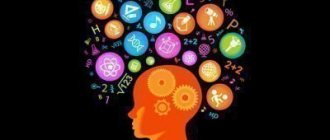Landmark, position, principles
A moral guideline is the goals and prohibitions (existing in the mind) that a person uses as a model for constructing a line of behavior.
Those. a moral guideline represents a clear framework beyond which a person does not allow himself to go.
Moral position is an assessment of the norms of social behavior and their compliance. A person passes this assessment through an internal “filter”, realizing it and accepting it as a guide for his own actions. Moral position includes:
- behavioral motives,
- self-regulation and control of one’s own actions,
- conscientiousness,
- a sense of human dignity (from the position of a person who has chosen a certain moral position for himself).
Moral principles are the framework on which social and interpersonal relationships are built.
At the same time, it is fair to assert that moral principles are universal, support social foundations through an external mechanism of influence (public approval or censure of behavior patterns), and can be expressed in moral norms.
Indicator of moral maturity of a person
Volitional personality traits - what is it in psychology, their formation
In everyday life, morality is synonymous with the concept of a “highly moral person.” To become like this, you need to become psychologically mature. Here are some criteria for a moral personality:
- Responsibility is a person’s ability to understand that his actions have consequences.
- Internal locus of control. A morally mature person will not shift responsibility to other people. Instead of looking for someone to blame, he will think about how to solve the problem or correct the mistakes he has made.
- Adequate self-esteem. Any moral person soberly assesses his strengths and weaknesses and acts based on them. He actively applies the former, and compensates for the latter or tries to correct it. A mature person will not lean to the other extreme - hyper-responsibility. Not everything depends on her, so she clearly distinguishes which situations were provoked and which happened by chance.
- The ability to reflect: analyze one’s thinking, actions and the situation in which a person finds himself. This allows you to draw conclusions and put them into practice.
- Willingness to be punished or experience the unpleasant consequences of one's actions. Lack of desire to run from problems caused by mistakes.
- The ability to predict the consequences of your actions before they are committed. For example, a person addicted to alcohol does not think about the consequences of his drinking. If he had thought about it seriously before he poured himself a drink, he might have been able to refrain.
Thus, moral maturity goes hand in hand with personal maturity. Its central concept is responsibility, which includes all the points described.
A good elephant is an example of morality
Important ! The formation of a highly moral personality is a long process that begins when a person is a preschooler. Kindergartens use different methods to develop intelligent individuals who will show respect for themselves and others. At school they teach social studies, where they talk about morality.
Human qualities: list
Morality and ethics intersect, forming a single system of qualities. This category includes the moral block:
- love for people
- respect for others,
- devotion (loyalty),
- selfless beginning (motivation to act due to good intentions rather than potential gain),
- spirituality (combination of morality and religiosity).
And the moral block :
- call of Duty,
- responsibility,
- honor,
- conscience,
- desire for justice
- dignity.
In addition to positive moral qualities, there are also negative ones : anger, envy, deceit, etc.
If the level of morality in a society is low, over time, negative actions and qualities become acceptable and preferable for society, and are then instilled in younger generations as the current norm.
The substitution of concepts occurs very quickly and the dynamics can be tracked even using the example of children and their parents.
A positive moral quality is recognized as such at the level of entire communities. And such universal qualities guarantee that their owner will be identified as a moral and educated person.
The most highly valued in modern society are responsibility, humanity, openness, sincerity, discipline, loyalty, collectivism, tact, hard work, diligence, and cleanliness.
High moral qualities are those qualities that are in the “positive” pole in a given society/culture.
But in some cases , “high” are those qualities that are dictated not so much by the need to successfully integrate into society, but by the deep and sincere feelings of an individual. This category includes patriotism, chastity, and absolute humanism.
Features of formation and types
Moral qualities are character traits that are formed in the process of a person’s theoretical thinking, contribute to his self-determination and the ability to adhere to an objective position, moving away from subjective assessment.
Moral qualities are personal attitudes that regulate the behavior of an individual within the framework of relationships with other members of society. The value system is based on feelings and emotions approved in society. What are the moral qualities:
- Mercy.
- Compassion.
- Sympathy, empathy.
- Self-esteem.
- Feelings of shame for committing negative actions.
One of the main regulators of an individual’s behavior is conscience – a sense of moral responsibility to other people and society as a whole for actions taken. The degree of manifestation of conscience reflects the level of an individual’s ability to independently determine moral duties and exercise moral self-control over their actions.
The formation of moral values occurs under the influence of many factors - upbringing, personal example of an authority figure, ethical standards preached in society. From childhood, an individual is instilled with the idea of positive behavioral models. The list of rules is almost limitless:
- Love your parents.
- Take care of elderly relatives.
- Do not take other people's things without asking.
- Don't lie.
- Do not offend the younger and weaker.
- Be loyal to the Motherland.
- Be obedient and hardworking.
The list of rules varies depending on the level of moral and spiritual development of the parents. In some cases (when the moral standards of the individual parent are deformed) it may contain attitudes that contradict generally accepted moral principles. When instilling moral values in a child, parents give examples that embody positive and negative behavior patterns.
Examples of feelings
A person experiences moral feelings at the moment when he realizes how much his actions correspond or do not correspond to moral standards .
And if the analysis of the actions taken confirms that the requirements of society and morality were taken into account, the individual will experience positive feelings.
If behavior goes against widely accepted models, feelings will be negative and destructive.
Examples:
- A person who responds rudely to an elderly person in line judges himself and experiences unpleasant feelings.
At the moment of committing an unsightly act, the hero was led by his own irritability. But at the same time, a person considers respect for elders to be an obligatory point in the system of moral guidelines. - The traveler, returning to his homeland, realizes the depth of his patriotism. At this moment, he experiences positive feelings, which take the form of pride for his fellow countrymen, love for his native land and respect for the country.
- A girl is waiting for her beloved guy from the army. Realizing that her behavior corresponds to the highest moral guidelines (loyalty and devotion), the heroine experiences positive emotions.
School period
The next stage is associated with the beginning of schooling. The student gets acquainted with new systems of rules and correlates them with the rules of the family. The first doubts visit him, the sense of justice becomes sharper. He gains his first experience in defending the right to his own opinion, his own scale of values. At this time, the child needs support. Parents must strengthen him in his beliefs and prevent him from plunging into a state of moral uncertainty. In turn, the child is ready to turn to his parents for help; they remain the main authorities.
Lessons at school necessarily contain a moral aspect
After ten to twelve years, teenagers begin to recognize themselves as part of not only the family and school community, but also a new generation.
Peer authority increases. Their behavior patterns are of increasing interest. There is a process of adopting new value systems and assessing their acceptability. The stage of hesitation and search begins. A teenager develops a need for abstract judgments about justice and moral values. Now the task of parents is to move from authoritarian leadership to the position of an empathetic adviser involved in the child’s problems. Behavior control is still necessary, but its forms should not create a lack of mutual trust and the emergence of barriers to communication.
Directions of moral development of schoolchildren
Advice: At all stages, a very important task of parents is to create an atmosphere of mutual care and trust in the home. Try to avoid sorting things out in front of the child. Try to join forces.
Behavior
Behavior becomes moral when an individual ties it to the existing system of moral values and tries to bring his actions to positive guidelines.
The key element of moral behavior is action .
An act, in turn, consists of an action and can receive a positive or negative assessment from members of society.
Abstaining from any action at a time when morality requires a person to be active can also be regarded as an act.
Moral behavior is difficult to evaluate objectively, but others always pass other people’s actions through “filter factors” :
- motives (if a noble motive led a person to an unsightly result, the degree of indignation of society will decrease),
- the result of an action
- objective reality (the circumstances in which the act was committed),
- means of achieving the task (a person can use “forbidden techniques” on the way to a good goal, which will seriously darken his moral character).
Moral behavior is always an attempt to find a balance between the restrictions established by society (framework) and one's own freedom (creative choice).
Theoretical foundations of spiritual and moral education
Raising a child in the spirit of high morality is a difficult task. In modern preschool and school pedagogy, it is customary to solve it in three aspects:
- philosophical and methodological;
- psychological;
- directly pedagogical.
The philosophical and methodological aspect substantiates the normative foundations for the spiritual and moral education of children of different ages. Therefore, the approach to teaching in junior and senior grades should be differentiated. This is the basis for the development of teaching methods. They are designed to give students an understanding of spirituality, ethics, ethics, spiritual and moral education and development - the basic foundations of general education.
Spiritual and moral education in this case is interpreted from the point of view of philosophy, religion, sociology, and cultural studies. Comprehensive in this case is an interdisciplinary approach to education, which provides for a variable consideration of it from the standpoint of both materialism and idealism.
The task of philosophical methods of spiritual and moral education is to instill in students a speculative view of the world. This is the position that allows us to compare the natural scientific and religious approaches to truth, asserting its relativity.
In this case, the principles of organizing the educational process become the education of schoolchildren in the spirit of activity, consciousness, and science. Students’ answers in lessons should be consistent, holistic, teaching should be as visual as possible: using thematic excursions, specially selected paintings, diagrams, symbols, etc.
The psychological aspect of spiritual and moral education involves a dialogue between teacher and student. The teacher must necessarily take into account the psychology of each age and, based on this, build the educational process.
In the primary grades where children are taught, play is the basis of learning. Through play situations artificially created by the teacher, the child emotionally masters the basics of spiritual and moral education. Some of them later become habits and become the leading motive for behavior in life.
In high school, issues related to spirituality and morality are resolved at the level of consciousness; they are more complicated and closer to real life. An effective teaching method is to model a problem situation, from which the student, as in real life, must find a way out himself, based on previously accumulated knowledge.
The pedagogical aspect in the education of spirituality and morality is based primarily on analytics. The first place here is the comparison of individual situations drawn from life. At the same time, students evaluate the advantages and disadvantages of certain behavioral options and choose the most, in their opinion, adequate from the point of view of the spiritual and moral concept being analyzed.
What are the standards?
Moral standards can be represented as a scale with two poles , one of which displays encouraged behavior patterns, and the other condemned.
Moral norms can be divided into two types: about what is permissible and what is unacceptable (about good and evil).
The concepts are opposite and mutually exclusive, which means that each norm has its own antipode.
This forces a person to take a stable position, since it is impossible to maintain neutrality in conditions of polarity (unless inaction is a conscious choice of a person who is ready to be condemned by others).
How to instill moral values in a child?
Every parent strives to raise their children to be good people, to develop the best traits in them: kindness, sincerity, decency, altruism. The list of qualities can be continued for a long time, but they are all laid down as a result of upbringing. Instilling values in children can be very difficult. Most moral topics are complex and controversial, so we need to talk about them constantly.
The range of moral problems is wide: from problems with friends or teachers to behavior on social networks. There are different types of activities that can be used to help instill the right values in your child:
Personal example.
Psychologists say that children do not hear, but they see and copy. Therefore, it is impossible to instill something in a child by force or by beliefs alone. If a child finds himself in a difficult situation, he acts exactly the same as the parent does. Therefore, the most effective pedagogical technique is the personal example of parents. This is something that can be taught to children without too much talk.
Conversations instead of sermons.
Schools are planning to introduce moral education lessons. But teachers believe that no government agency can replace a conversation between loving and competent parents. Children are more receptive to information received through discussion rather than through orders or instructions. Therefore, in a conversation you need to simultaneously act as an authority and a friend, but you should not allow a patronizing tone.
Discussions instead of lectures.
The child is constantly learning and absorbs huge amounts of information. Therefore, what evokes vivid emotions is best remembered. The ability to start and maintain a discussion on the desired topic, to make the discussion bright and exciting is a valuable skill of a parent. But don't say too much. It is better to stir up interest in the topic with short leading questions “Why” and “Why?”
Cooperative games.
An ordinary children's game can become not just fun, but a serious school of morality. In a collective game, a child has to communicate, cooperate, argue, negotiate with other players and thereby learn to overcome his egocentrism. Thus, gradually the idea of justice is born in children, moral principles are created, which then develop into moral values.
Relativism, what is it?
Moral relativism is a position whose proponents deny the possibility of the existence of absolute evil or good.
According to moral relativism, morality is not tied to universal standards.
Ethical behavior is only a variable value that changes as a result of changing scenery (culture, participants in the action, nuances of the situation, etc.).
Relativism can be viewed in two ways:
- the concepts of “good” and “evil” are conditional in themselves,
- public morality is conditional relative to unconditional standards of good and evil.
What parents need to remember
Moral education should in no case be reduced to imposing restrictions and prohibitions. It is possible, of course, to force a child to act as is customary through punishment and threats. This approach will really give results for some period. It cannot be completely excluded from the upbringing process, especially in the early stages and in cases where failure to comply with parental requirements may pose a potential threat to the health and life of the child. But from a long-term point of view and as the baby grows up, this tactic will turn out to be ineffective and even harmful. After all, it is important not just to force the child to follow a certain set of rules, but to instill in him an understanding of the need for these rules. To form in him an attitude towards power (in the broad sense of the word) based on acceptance of its objective authority, and not out of fear of punishment. In the process of moral growth, a child must gain an understanding of why he should act and treat others this way and not otherwise. Parents who choose this path should call upon attentiveness, patience, tactfulness, objectivity and fairness as assistants.
Goals of moral education
Briefly about the theory of moral development
How is morality formed in children? Many scientists have asked this question. But in the modern world, only Lawrence Kohlberg's theory has achieved wide recognition.
Kohlberg used the dilemma method. He projected onto children situations in which the young participants in the experiment had to make difficult moral choices.
As a result, the idea that children develop spontaneous morality, not tied to any numbers or indicators, was rejected.
Kohlberg identified three levels of development of moral consciousness:
- Age from 4 to 10 years. This level was called "pre-moral". In the period from four to ten years, a child puts his own benefit and safety at the forefront. At the first stage of development, he seeks to gain approval in order to escape punishment. And the correct tactics of behavior are easy to build with the help of tips (social norms). At the second stage, the child is already focused on potential rewards for good behavior. The kid thinks not about punishment, but about benefit.
- Age from 10 to 13 years. The level is called conventional. During this period, the child already begins to understand the rules and values accepted by society. At the first stage, the measure of moral success is people from one’s close circle. Shame and the reluctance to disappoint authority figures pushes people to follow the rules. At the second stage, the child already understands the reasons why the restrictions were introduced. He also sees them as a way to assert and protect his own rights.
- Age after 13 years. A teenager creates his own system of moral values, adjusting the template accepted by society.
At the first stage, a lot of attention is paid to those norms that help to survive and maintain peace in society. At the second stage, a person already has stable moral principles, which he adheres to despite external influences and circumstances. If necessary, the individual will be able to fight back and endure the disapproval of the crowd if the behavior of the crowd seems unfair.
The origins of religious and moral norms.
Moral laws began to form in primitive society in order to resist animal instincts. It was they who distinguished and distinguish man from other living beings. But biological instincts have been honed at the genetic level for billions of years. The moral norms of the social world are formed over a shorter period of time, so there is a clear imbalance between these laws.
Unlike legal norms, moral norms are not protected at the state level . It is believed that society reacts to deviations from moral norms with verbal or written disapproval, condemnation, and censure. But society can just as easily advertise a departure from moral principles. Therefore, the only omnipotent and controlling institution that monitors compliance with moral standards remains the church.
In Christianity there are ten main commandments: do not kill, do not steal... But at the heart of all these norms is the “golden rule of morality”: “Treat others the way you want to be treated.” In essence, this is a universal formulation of the individual’s relationship to himself through relationships with others. This moral requirement was mentioned in Homer’s “Odyssey” and the works of Aristotle. The rule was mentioned in encyclopedias and philosophical works under various names: judgment, saying, commandment, wisdom. Gold status was assigned to it at the end of the 18th century.
Today there is a lot of talk about the inextricable connection between morality and the vitality of society, and the Christian religion throughout history has given advice to people on how to live in this society. But 2,000 years of Christian practice have proven that no one succeeds in fulfilling moral standards and living in society.
Morality in culture
The term "culture" has a double meaning. If we talk about culture of behavior, then this is the standard of norms accepted in society. In this case, culture becomes synonymous with ethics. However, most often culture is associated with art, including folk art.
The culture of the people is embodied in songs, dances, special clothing styles, folklore, painting and other artistic products. The importance of such a culture for the education of a moral person cannot be overestimated. It fosters a sense of pride in one’s people, a desire to belong to this community, to be its faithful defender.











